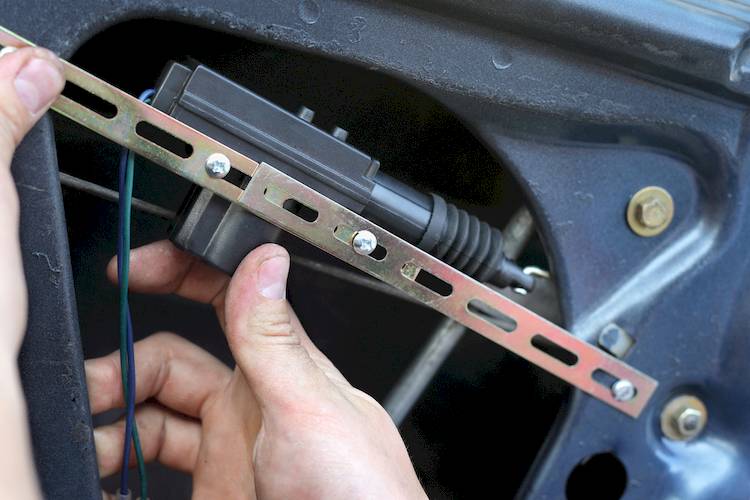

The rapid growth of automotive technology in the mid 1980's stimulated several improvements in safety, efficiency and convenience for United States car owners. One item we often take for granted is the trunk lock actuator, an electronic device that makes "popping the trunk" a snap with one push of a button. The trunk lock actuator is the electric motor that can be remotely triggered via the fob device or is activated by pressing a button inside the vehicle. Different makes and model vehicles have specific designs and locations of this device, however, one thing they all have in common is the potential of device failure.
Anytime you place items in your trunk, you'll want to know that they will be kept safe and secure. The trunk lock actuator makes sure this is a reality. Today's trunk locking mechanisms are comprised of a keyed lock cylinder and a trunk lock actuator in cars that offer a power trunk release once activated. The trunk lock actuator then releases the trunk latch so the trunk can be opened. All of this is done without you having to insert a key into the lock cylinder. The trunk lock actuator can act up from time to time due to wiring issues, broken parts, and other causes. This device typically is not repaired, as it's more efficient for a certified mechanic to simply replace it with a new actuator.
Listed below are a few of the common warning signs that a problem with the trunk lock actuator exists. If you recognize these symptoms, contact a local ASE certified mechanic as soon as possible so they can replace the trunk lock actuator.
1. Trunk does not open even after hearing the "click"
A trunk lock actuator makes a distinct "clicking" sound when it is activated. One of the major issues that can occur with this device is that the motor will work, but the locking mechanism does not. A locking mechanism has multiple components inside the actuator; one of which is a linkage system that manually moves the lock to the open position when the actuator is activated. Occasionally the linkage may become damaged, or the electronic wire that is attached to linkage might come loose. If you notice that the trunk lock does not spring open when you press the fob remote or the button inside your vehicle's cab, contact a mechanic so they can determine what is wrong and fix it as soon as possible.
2. Release buttons are not working properly
Another common signal that a problem with the trunk lock actuator exists is when you press the fob button or the inside trunk release and nothing happens. This might indicate a problem with the electronics running to the actuator such as a fuse or wire being shorted or an issue with the vehicle’s battery. Since there are many potential problems that can cause this issue, it's best to contact a local mechanic so they can properly diagnose and fix the issue as soon as possible.
3. Trunk actuator doesn’t stop "clicking"
The actuator is an electrical device and as such is prone to receiving constant power without shutting off. This is often caused by an electrical short inside the unit that receives the power but does not send a signal to the source to discontinue the flow of electricity. In this situation, you'll want to disconnect your vehicle's battery if possible as this issue could lead to other electrical systems being damaged. In either case, contact a local ASE certified mechanic as soon as you notice this problem so they can properly diagnose the issue and fix it for you.
4. Manual locking mechanism works fine
If you try to unlock the trunk with the fob or switch in your car and it doesn't work, but the manual lock works fine, this is a clear cut signal that your trunk lock actuator is broken. There is no repair that can be done at this point and you will have to contact a mechanic so they can replace the trunk lock actuator.
Anytime you notice any of the above warning signs, it's a good idea to get the issue fixed sooner rather than later. Although a broken trunk lock actuator is more of an inconvenience than a safety or drivability issue, it's still important to the overall operation of your vehicle.



